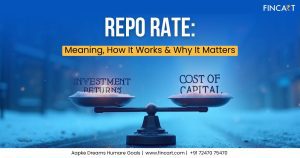Investing can seem overwhelming at first, especially for beginners—but with the right understanding, it becomes a strategic and empowering way to build long-term wealth. Whether you’re planning for retirement, funding your child’s education, or aiming for financial independence, knowing how investments work is key to making informed decisions. This blog breaks down the core elements of investment and explains how they shape your financial journey.
By understanding key concepts like risk, return, diversification, and time horizon, you can avoid common pitfalls and make choices that align with your goals.
What Is Investment?
At its core, investment is the act of putting your money into assets—like stocks, bonds, or real estate—with the expectation of generating a return over time. Unlike saving, which prioritizes safety and liquidity, investing involves some level of risk in exchange for the potential of higher returns.
However, building wealth through investment isn’t just about choosing assets. It’s about understanding the elements of investment that influence risk, performance, and growth.
Why Understanding the Elements of Investment Is Crucial
You wouldn’t build a house without a blueprint—and similarly, you shouldn’t invest without understanding the key components that determine success. These elements guide how you choose assets, manage risk, and plan your financial future.
Let’s explore them one by one.
1. Risk
Risk is the possibility that your investment may not perform as expected, or worse, may result in a loss. Every type of investment comes with some level of risk, including:
- Market Risk: Price fluctuations in the stock or bond markets.
- Inflation Risk: When inflation outpaces your investment returns, reducing real purchasing power.
- Interest Rate Risk: Especially relevant to fixed-income instruments like bonds.
- Credit Risk: The chance a bond issuer may default on payments.
Understanding your personal risk tolerance—how much loss you can emotionally and financially bear—is the first step toward effective investing. An investment advisor can help you assess and align your investments with your risk appetite.
2. Return
Return is what you earn from your investments, typically expressed as a percentage. It comes in two primary forms:
- Capital Gains: Profit from selling an asset at a higher price than you paid while purchasing.
- Income: Dividends from stocks or interest from bonds.
High returns often come with higher risk, so balancing your portfolio to match your goals is key.
3. Time Horizon
It is the duration for which you plan to keep your money invented before you need it. Time horizon influences your choice of investment assets.
- Short-Term (0–3 years): Low-risk instruments like fixed deposits, liquid mutual funds.
- Medium-Term (3–5 years): Balanced mutual funds, debt funds.
- Long-Term (5+ years): Equity mutual funds, stocks, real estate.
Longer horizons allow you to absorb market volatility and benefit from compounding.
4. Diversification
In this strategy you spread investments across different asset classes, sectors, or geographies. It reduces the impact of poor performance in a single area.
For example, if the tech sector crashes, having investments in healthcare, FMCG, or real estate can offset losses.
5. Liquidity
Liquidity measures how quickly and easily you can convert an investment into cash without significantly affecting its value.
- High Liquidity: Stocks, mutual funds.
- Moderate Liquidity: Bonds, ETFs.
- Low Liquidity: Real estate, private equity.
If you anticipate needing access to your funds soon, prioritizing liquid investments is essential.
6. Compounding
Often called the “eighth wonder of the world,” compounding is the process where your investment returns generate their own returns over time.
Here’s a quick example:
- You invest ₹10,000 at 8% annual interest.
- After 1 year: ₹10,800.
- After 2 years: ₹11,664 (interest on ₹10,800).
- Over 10–20 years, this snowball effect can significantly multiply your wealth.
Starting early and staying invested is the secret to harnessing compounding.
7. Costs, Fees & Taxes
Investing comes with costs that can erode returns if not managed wisely:
- Fund Management Fees: Charged by mutual funds and portfolio managers.
- Brokerage Fees: For buying/selling shares.
- Exit Loads: Charged when exiting certain mutual funds early.
- Taxes:
- Short-Term Capital Gains (STCG): Taxed at 15% for equities held less than a year.
- Long-Term Capital Gains (LTCG): Taxed at 10% beyond ₹1 lakh per year on listed equities.
- Short-Term Capital Gains (STCG): Taxed at 15% for equities held less than a year.
A reliable investment advisory service helps you optimize for tax efficiency and net returns.
Types of Investments (With Comparison Table)
Understanding different investment vehicles helps you diversify wisely and choose options aligned with your financial goals, risk tolerance, and liquidity needs. Here’s a quick comparison:
| Investment Type | Risk Level | Liquidity | Return Potential | Best For |
| Stocks (Equity) | High | High | High | Long-term capital growth, wealth creation |
| Bonds | Low to Medium | Medium | Moderate | Steady income, capital preservation |
| Mutual Funds & ETFs | Varies (Low to High) | High | Moderate to High | Diversification, beginners, passive investing |
| Real Estate | Medium to High | Low | High | Passive income, portfolio diversification |
| Commodities (Gold, Oil, etc.) | Medium | Medium | Medium | Inflation hedge, asset diversification |
| Public Provident Fund (PPF) | Low | Low (15-year lock-in) | Fixed (Government-backed) | Tax-saving, retirement planning |
| Savings A/C & Fixed Deposit | Very Low | Very High | Low | Emergency fund, capital safety |
| Cryptocurrency | Very High | High | Very High | High-risk investors, speculative opportunities |
8. Goals & Strategy Alignment
Every investor should define clear financial goals—buying a home, funding education, or planning retirement. These goals shape your asset allocation and risk strategy.
For example:
- A 25-year-old investing for retirement can afford to invest heavily in equities.
- A 55-year-old nearing retirement may prioritize safety and capital preservation.
A qualified investment advisor will help align your portfolio with your personal goals and milestones.
9. Monitoring and Rebalancing
Once you’ve invested, the journey doesn’t end there. Regularly monitoring your investments ensures you’re on track to meet your goals. Over time, the weight of different assets in your portfolio may shift due to market performance.
Rebalancing is the process of realigning your portfolio to its original target allocation. It helps maintain the desired risk level and captures profits from overperforming assets.
10. Professional Guidance
Even with a solid understanding of the elements of investment, the financial world can be complex. Partnering with an experienced investment advisor can provide personalized guidance, save time, and enhance decision-making.
A good investment advisory service offers:
- Risk assessment
- Tailored asset allocation
- Tax-efficient planning
- Regular updates and reviews
At Fincart, our seasoned advisors work with you to build a strategy that fits your life and financial vision.
Steps to Start Your Investment Journey
Here’s a simplified roadmap:
- Define Your Goals: Be clear about what you’re saving for and when you need the money.
- Assess Your Risk Tolerance: Know how much volatility you’re comfortable with.
- Choose the Right Asset Mix: Based on your goals, time horizon, and risk profile.
- Start Small, Stay Consistent: Use SIPs in mutual funds to build a habit.
- Review Periodically: Track performance and rebalance when needed.
- Seek Expert Help: Use professional investment advisory services to make informed choices.
Behavioral Aspects of Investing
While technical knowledge and asset selection are essential, an often overlooked yet critical factor in successful investing is investor behavior. Emotions such as fear, greed, and impatience can heavily influence investment decisions and sometimes do more harm than market volatility itself.
Common Behavioral Traps to Avoid:
- Herd Mentality: Following the crowd without understanding the fundamentals of an investment can lead to poor choices. Just because everyone is buying a certain stock doesn’t mean it aligns with your financial goals.
- Overconfidence Bias: Some investors believe they can time the market perfectly. However, even experienced professionals often struggle with market timing. Relying on a disciplined strategy is far more effective.
- Loss Aversion: Many investors fear losses more than they value equivalent gains. This can lead to premature selling during market downturns or hesitance to invest altogether, stalling long-term growth.
- Short-Term Thinking: Investing requires patience. Jumping from one asset to another in pursuit of quick profits can result in excessive fees and missed opportunities. A long-term outlook, supported by solid research or investment advisory services, typically yields better results.
This is where the value of an investment advisor becomes apparent. A seasoned advisor helps clients navigate market emotions, stay focused during downturns, and avoid reactive decisions that could derail long-term plans.
Ultimately, successful investing is a balance of strategy and psychology. The best investment plan can fail if not executed with discipline and emotional control.
Pro Tip: Before reacting to market news or volatility, revisit your goals and speak with your advisor. A calm, informed approach often leads to better outcomes than emotionally driven decisions.
Conclusion
Mastering the elements of investment is the first step toward building long-term financial security. By understanding risk, return, time horizon, diversification, compounding, and liquidity, you can create a strategy tailored to your goals.
But remember, investing is not a one-size-fits-all solution. Everyone’s financial journey is unique, and the smartest way to succeed is by working with the right partner.
Fincart offers personalized investment advisory services designed to help you make smarter decisions with confidence. Whether you’re a beginner or a seasoned investor, our team is here to guide you at every step.




